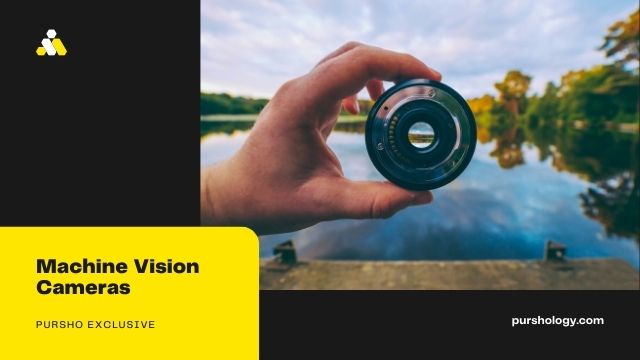Machine vision uses sensors (cameras), handling equipment, and programming calculations to robotize complicated or commonplace visual investigation errands and unequivocally guide dealing with hardware during item gathering. Applications incorporate Positioning, Identification, Verification, Measurement, and Flaw Detection. A machine vision system will work energetically performing 100 percent online examination, bringing about superior item quality, better returns, and lower creation costs. Steady item appearance and quality drive consumer loyalty and at last portion of the overall industry.
The mission of us.get-cameras.com is to contribute to promote technological development. Thanks to their innovative business strategy and their web shop they make the use of machine vision cameras more accessible and cost efficient.
Components of Machine Vision System.
A machine vision framework comprises a few basic parts, from the sensor (camera) that catches an image for review, to the handling motor itself (vision apparatus) that renders and conveys the outcome. For any machine vision framework to work dependably and produce repeatable outcomes, it is essential to comprehend how these crucial parts associate.
The following segments will furnish you with a prologue to lighting, organizing, optics, and cameras, all basic parts of a fruitful machine vision arrangement.
Lighting
The natural eye can see above and beyond an extensive variety of lighting conditions, yet a machine vision framework isn’t as fit. You should subsequently cautiously light the part being investigated so the machine vision framework can obviously ‘see’ them. The light should be directed and consistent with the goal that the light changes seen by the machine vision framework are because of changes in the parts being examined and not changes in the light source.
Legal lighting makes review quicker and more precise. Unfortunate lighting is a significant reason for disappointment in machine vision review frameworks. As a general rule, the accessible or surrounding light is unfortunate lighting and won’t work. For instance, the elevated lights in a plant can wear out, faint, or be impeded, and these progressions may be deciphered as part of disappointments by the machine vision framework.
Staging
Staging typically is mechanical. It likewise generally remembers a Part-for Place sensor that tells the machine vision framework when a section is before the camera. This sensor is generally a basic light source and photoelectric locator, for instance. Organizing, at times called fixturing, holds the part to be reviewed at an exact area before the camera for a Vision Appliance to ‘see’.
Optics And Lenses
The focal point assembles the light reflected from the part being examined and shapes a picture in the camera sensor. The legitimate focal point permits you to see the field of view you need and to put the camera at a helpful working separation from the part. To pick the appropriate focal point you will initially have to know the field-of-view (FOV) and the functioning distance. The FOV is the size of the area you need to catch.
Cameras
The camera contains a sensor that converts light from the focal point into electrical signs. These signs are digitized into a variety of values called pixels and handled by a Vision Appliance to play out the review.
The goal of the assessment relies on the functioning distance, the field-of-view (FOV), and the number of actual pixels in the camera’s sensor. A standard VGA camera has 640 x 480 actual pixels (width x level), and each actual pixel is around 7.4 microns square. From these numbers, the goal can be assessed for your real world units. We typically determine the goal as a negligible portion of an actual pixel, as this is free of your specific imaging set-up.




